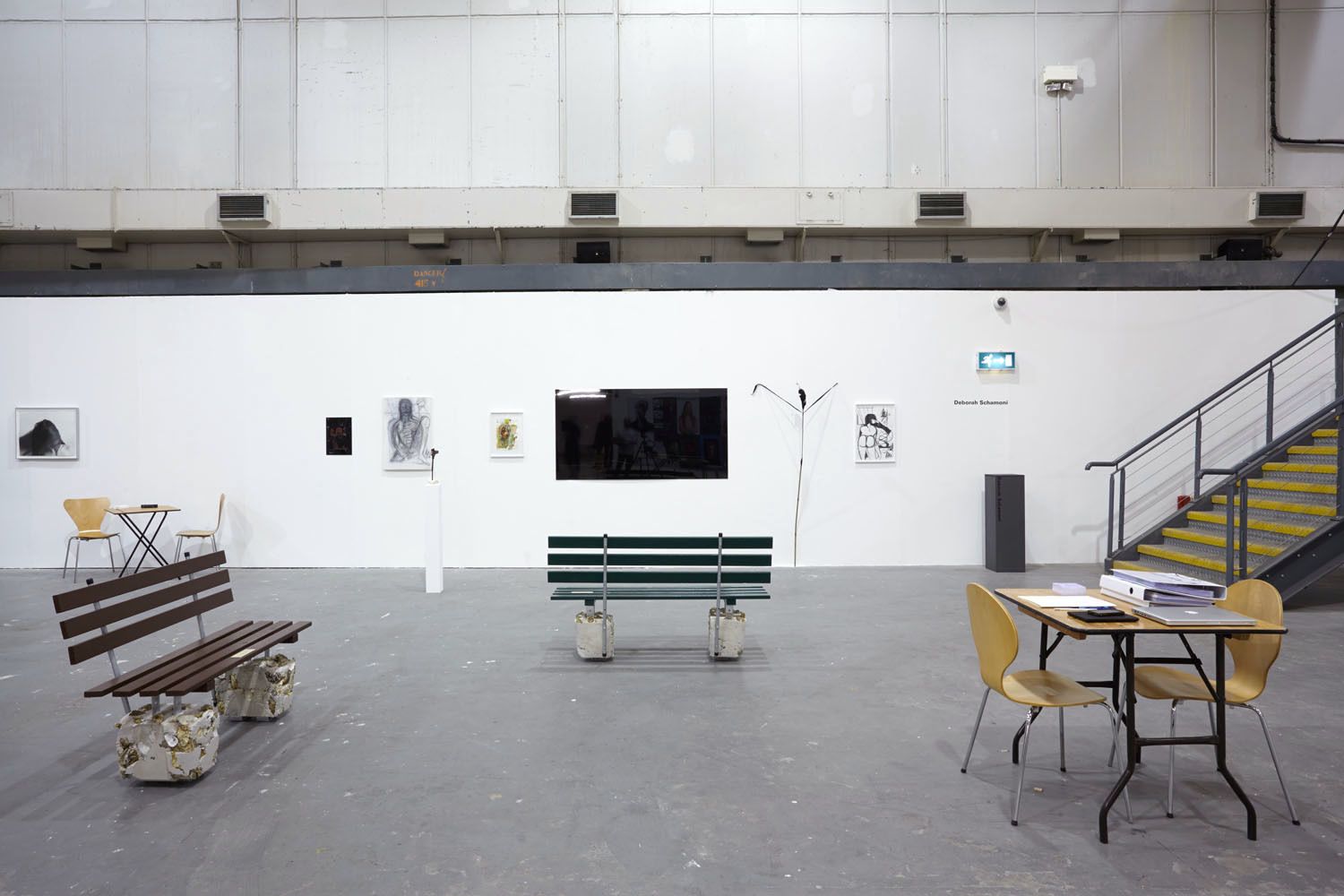Anne Imhof anchors all the diverse mediums that she works with - video, music, installation, sculpture, etchings, drawings and painting - in performance. For her, performance becomes the central process for generating art and the performances that she stages are rehearsed, outfitted with props, sketched and catalogued in ways that expand beyond the classic formula of “audience-event-documentation.” Any new performance is rooted in one that has already taken place, either as a new version or work that has sprouted from a specific gesture or fragment from a past performance or rehearsal. This way of working extends to her sculptures, drawings and etchings. An idea that arrives through a performance is then translated into a different medium, thus giving her practice a cyclical characteristic. In RAGE, the bodies of the performers share proximity without touch, a characteristic also of Imhof's graphic and sculptural works, in which bodies are streaked by colour and word sequences. Re-appearing in other works, they heat up and abate, like a choir in rehearsal. Her etchings on black alu dibond panels, such as Pleasure, 201 4, have a strong physical presence without being explicitly expressive. The marks they wear suggest scrapes and bruises. To title such scratches Pleasure is, of course, one part ironic and one part demonstrative of Imhof's interest in “the relation between dominance and submission.” When exhibited and hung at the right height, they resemble the lines left by a key that someone has let dig and scrape along the shiny. This produces a tension between the imagined act, disturbed and violent, and the lines themselves, which elegantly skate along the panels. There is a similar tension in the sculpture Cobra, 201 4, where a toothbrush is wrapped in tape, alabaster, and black acrylic to look vicious, dangerous, not something you would want to put in your mouth. The toothbrush, which signifies the mouth, here dresses up like a snake, bringing us back to the notion of a performance.
read more
After first relocating to Europe in 2005, Bibby worked annual gigs at Frieze. When digging a hole in Regent's Park, he stumbled upon shards of oyster shells, which triggered him to research the history of the exchange and labour processes surrounding oysters in London. Plentiful to the British coast, oysters were once a common everyday food for the working-class until their overharvesting in the 20th century turned them into a luxury food item. In fact, the Roman Empire used to import oysters from London. Invited by Frieze Projects in 201 3, Bibby used this desirable shell-fish to respond to the infrastructure of the art fair, practicing a sort of institutional critique that revealed and questioned the fair's social structures. Before the fair, together with a professional oyster shucker, Bibby staged an action in which he handed out oysters on the half shell to building staff and fair workers. He then collected their shells and displayed them in the fair's public areas, outside of the tent, alongside shells from a second action which he produced in collaboration with If I Can't Dance, I Don't Want to Be Part of Your Revolution, the Amsterdam-based performance platform. After Frieze London, Bibby continued to work with the oyster shells by using them literally as the foundation for a series of sculptures. He set the oysters in cement and these blocks of cement form the legs of sculptures of park benches. All from 201 4, each bench is assigned a colour and the name of a city that Bibby has worked in for his book project The Drumhead, such as Bregenz Winter (Goodbye & Good luck), London Brown II (+4475069767627), and NYBlack ( ). The bracketed text appears both in the title and, engraved on a plaque, on the bench itself. For London Brown II, the bracketed title of a phone number suggests calling cards, phone numbers scribbled in bathroom stalls and public benches, meeting points, gay cruising areas in parks. Where do people meet? How? Not made in a uniform size or with the plaques installed in the same spot (sometimes it appears on the seat of the bench, other times on the back), the sculptures defy a single standard. From the shells of fresh oysters served to workers on the grounds of a park to the legs of a park bench, this project generates a cycle, and now the English oysters return to London.

